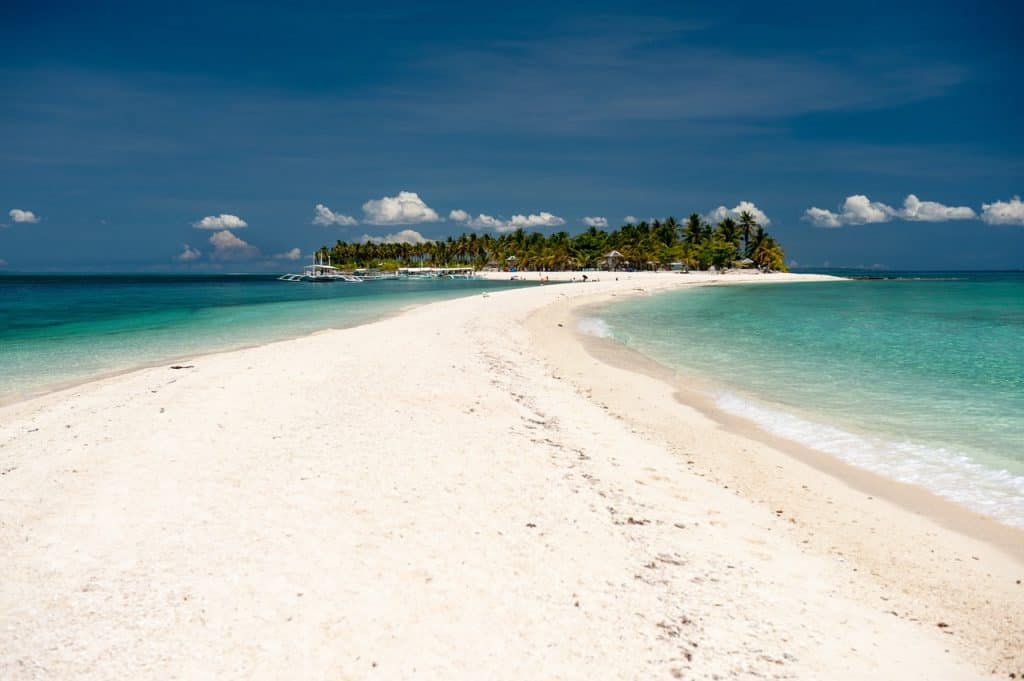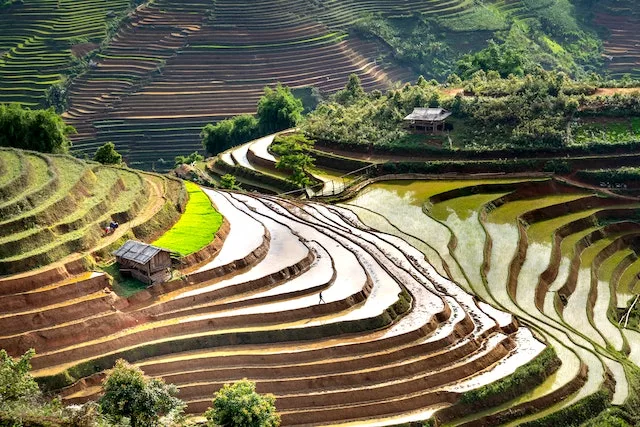
Ifugao, Land of the Sky-Kissing Terraces
Nestled in the heart of the Philippine Cordillera Mountains lies Ifugao, a province famed for its ancient culture and the breathtaking Banaue Rice Terraces. These iconic emerald steps, carved into the mountainsides centuries ago, ascend towards the heavens like a verdant staircase.
In 1995, these magnificent terraces earned their place on UNESCO’s World Heritage List, recognized as a living testament to human ingenuity. Unlike other engineering marvels built by forced labor, the Banaue terraces stand as a tribute to the wisdom and skill of free men. The Ifugao ancestors, with their deep understanding of nature, established a sustainable forest and watershed management system to nourish the land and ensure the terraces’ endurance for generations.
Speaking of ingenuity, the traditional Ifugao huts deserve mention. These remarkable structures, prefabricated without a single nail or metal fastener, might be considered among the world’s first portable homes.
Ifugao Geography
Nestled amongst the towering peaks of the Cordillera Mountain Range lies Ifugao, a landlocked province in the Philippines. Nestled between Benguet to the west, Nueva Vizcaya to the south, Isabela to the east, and Mountain Province to the north, it spans a total area of 251,778 hectares, roughly 322 kilometers north of Manila.
Administrative Divisions:
As of 1988, Ifugao boasts 11 municipalities and 178 barangays, with Lagawe serving as the vibrant provincial capital.
Climate:
Ifugao experiences distinct dry and rainy seasons. Dry skies grace the province from November to April, while the rest of the year welcomes rain. March and April bring the hottest days, while November to February offer a refreshing respite.
Population:
According to the NSO 2000 census, Ifugao is home to 161,634 residents.
Language:
While English is widely spoken and understood, the Ifugao dialect reigns supreme as the mother tongue. Ilocano and Tagalog also find their place in the cultural tapestry.
Economy:
The land cultivates fertile grounds for farming, particularly rice and vegetables. The trading industry thrives with its focus on gifts, toys, and housewares. Services, manufacturing (garments and textiles), and food and beverages further diversify the economic landscape.
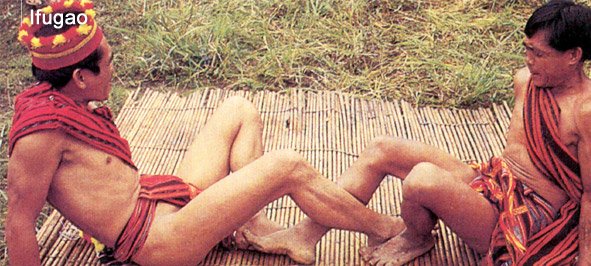
Ifugao History
Ifugao: A Land of Rice Terraces, Rich Culture, and Historical Significance
Ifugao, a landlocked province in the Cordillera Administrative Region of Luzon, Philippines, boasts a rich history, vibrant culture, and breathtaking landscapes. Formerly part of the Mountain Province, Ifugao gained its independence in 1966. Its name, derived from the Ifugao word “Ipugo” meaning “hill people,” reflects the province’s mountainous terrain.
Custom and Ancestry: The Bedrock of Ifugao Culture
For the Ifugaos, tradition reigns supreme. Their customs, deeply rooted in ancestral knowledge, are passed down through generations. Extensive pedigrees serve as graphic representations of this cultural principle: “We cannot but do what our ancestors told us.” This emphasis on ancestry fosters a strong sense of community and identity.
Echoes of World War II
Ifugao played a pivotal role in the final stages of World War II. The province, particularly Mt. Napulawan, became the last stand for General Yamashita, the “Tiger of Malaya.” His surrender to Captain Grisham in Kiangan marked a turning point in the war.
Banaue Rice Terraces: A Wonder of the World
The Banaue Rice Terraces, dubbed the “Eighth Wonder of the World,” are Ifugao’s crown jewels. Carved into the mountainsides over 2,000 years ago, these intricate terraces showcase the ingenuity and engineering prowess of the Ifugao people. Streams and springs are channeled through irrigation canals, nurturing the rice paddies that stretch for miles.
Exploring the Rice Terraces:
- Batad Rice Terraces: Shaped like an amphitheater, these terraces offer stunning views and a challenging hike.
- Bangaan Rice Terraces: Witness a typical Ifugao village nestled amidst the terraces, accessible by a short trek.
- Mayoyao Rice Terraces: Immerse yourself in the heart of the rice terraces, with their unique tiered dikes.
- Hapao Rice Terraces: Discover more of Ifugao’s stone-walled wonders in the municipality of Hungduan.
Beyond the Terraces:
Ifugao offers more than just breathtaking landscapes.
- Imbayah Festival: Witness a unique ethnic sports festival held every four years, featuring vibrant parades and traditional games.
- Philippine War Memorial Shrine: Pay homage at this imposing pyramid-shaped structure, commemorating the end of World War II and showcasing Ifugao’s role in the conflict.
- Gotad ad Kiangan: Experience a festive celebration filled with music, dance, and wine, part of the Ifugao prestige rites.
- Hudhud: Immerse yourself in the UNESCO-recognized Ifugao epic, sung for generations and preserving the region’s rich oral tradition.
- Mountain Biking: Embark on an exhilarating adventure through the rugged mountains, encountering diverse landscapes and local communities.
Ifugao awaits with its captivating blend of natural beauty, cultural heritage, and historical significance. Come explore this remarkable province and discover its unique charm.
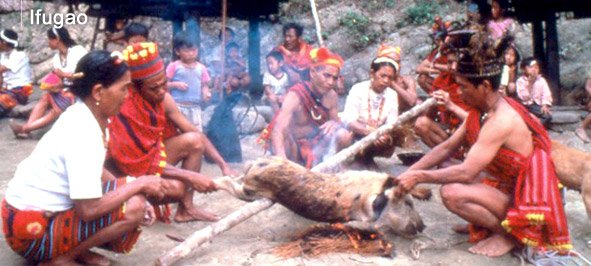
Things to Do and see in Ifugao
Historical Highlights in Kiangan:
1. Philippine War Memorial Shrine (Kiangan)
- Majestic monument: This towering concrete pyramid resembles an oversized Ifugao house, commemorating the end of World War II.
- Historical narration: The structure chronicles Filipino resistance against the Death March and the crucial role of Ifugao and American troops in defeating General Yamashita.
- Panoramic viewpoint: Enjoy breathtaking views of Kiangan town, neighboring villages, and Lagawe, the capital.
- Location: Linda, Kiangan; a 10km (15-minute drive) journey from Lagawe.
2. Million Dollar Hill
- Explosive history: This hill overlooking Kiangan earned its name due to the immense firepower unleashed by Allied forces to eliminate Japanese troops during WWII.
3. General Yamashita’s Surrender Site
- End of an era: Immerse yourself in relics and exhibits detailing the momentous surrender of General Yamashita, marking the end of WWII in the Philippines.
- Next chapter: Witness the site where Yamashita was later transported to Baguio for his formal surrender to the Allied forces.
4. Mt. Nagchayan
- Echoes of battle: Explore this former battlefield where Japanese troops fiercely resisted during WWII.
- Traces of conflict: Discover hidden grottos, stone-walled trenches, foxholes, and even rusty shells that whisper stories of the past.
Explore the Rich Culture of Ifugao:
1. Cultural Ifugao Museum (Kiangan):
- Immerse yourself in Ifugao heritage: This museum houses a fascinating collection of artifacts that showcase the rich culture and traditions of the Ifugao people. Learn about their way of life, from intricate wood carvings and hand-woven textiles to ancient tools and religious objects.
Opens in a new windowwww.vigattintourism.com
Cultural Ifugao Museum (Kiangan)
- National Museum of the Philippines: The museum is overseen by the National Museum of the Philippines, ensuring the preservation and appreciation of Ifugao heritage for future generations. Ms. Rosario Guinid serves as the dedicated curator.
- Convenient location: Easy to find, the museum is just 32 meters away from the Kiangan Shrine and 300 meters from the Municipal Hall.
2. Tam-an Village:
- Step back in time: Descend 240 steps down from the Banaue Hotel’s swimming pool to reach this charming village. Tam-an offers a glimpse into traditional Ifugao life, where skilled artisans create beautiful wood carvings and hand-woven products that you can admire and purchase.
Opens in a new windowenglish.makalukhabar.com
Taman Village
- Support local crafts: Buying handicrafts from Tam-an directly supports the talented artisans and helps preserve their cultural heritage.
3. Bokiawan Village:
- Discover authentic traditions: Venture 12 kilometers from Banaue to reach Bokiawan, nestled amidst the breathtaking Bokiawan rice terraces. This village is a living testament to Ifugao culture, where time-honored practices of land use and livelihood are still thriving.
Opens in a new windowbusinessforifugaoproduct.wordpress.com
Bokiawan Village
- Witness rice culture: Immerse yourself in the world of rice farming, a central element of Ifugao life. Observe the intricate irrigation systems and learn about the traditional methods used to cultivate rice on the steep mountain slopes.
4. Pula and Cambulo Native Village:
- Experience rustic charm: Embark on a scenic trek from the Banaue viewpoint to Banga-an, and make a stop at this picturesque village. Pula and Cambulo offer a unique opportunity to stay in a traditional Ifugao house, built with cobblestones and surrounded by lush greenery.
Opens in a new windowbusinessforifugaoproduct.wordpress.com
Pula and Cambulo Native Village
- Learn ancient crafts: Witness the fascinating art of bark cloth weaving, a centuries-old tradition practiced by the villagers. Discover the natural materials and techniques used to create this unique fabric.
Apfo’or Burial Tombs
Mayoyao: A Journey Through History and Culture
Ancient Wonders:
- Burial Caves: Explore the mysterious Makaliwagha & Lebhong Burial Caves, filled with wood coffins and remnants of Mayoyao’s first inhabitants. Legend speaks of a lizard guiding people to these chambers, one for men, one for women, and one for children.
- Lumauig Stone: Witness the enchanted black rock balanced on three smaller stones in the Balangbang River. Locals believe it signifies Mayoyao’s strength and happiness as long as it stands.
Traditional Villages:
- Bocos, Poitan, Batad, Hapao, Bangaan, Ducligan: Immerse yourself in the warmth of these wholesome Ifugao communities. Picture houses clustered together, surrounded by fields where villagers cultivate their own food.
Waterfalls and Viewpoints:
- Bagnit & Numbungug Waterfalls: Take a refreshing dip in the cascading waters of Bagnit Falls (250 ft) or the majestic Numbungug Falls (80 ft).
- Chuyong Viewpoint: Capture panoramic vistas of the Mayoyao World Heritage site from this vantage point near town.
Legendary Sites:
- Kibayuyong Stone: Discover the legendary stone beside the Hapao River, a popular spot for swimming and diving.
- Bogya Hot Springs: Relax your muscles in the naturally heated waters of Bogya Hot Springs after a day of exploring.
- Mt. Amphalagag: Trek through lush trails and unwind in the cool pools at the foot of this mountain.
Man-Made Marvels:
- Banaue Rice Terraces: Marvel at the “Eighth Wonder of the World”, rice terraces carved into the mountainsides thousands of years ago. These ingenious creations stretch for miles, reaching thousands of feet high.
- Batad Rice Terraces: Hike to the amphitheater-shaped Batad Rice Terraces, a UNESCO World Heritage Site accessible by a scenic route.
- Bangaan Rice Terraces: Experience the typical Ifugao village life amidst the stunning Bangaan Rice Terraces, easily accessible by road.
- Mayoyao Rice Terraces: Immerse yourself in the heart of the rice terraces upon arrival in Mayoyao town, where tiered stone dikes create a breathtaking scene.
- Hapao Rice Terraces: Explore the stone-walled rice terraces of Hungduan, showcasing the harmonious relationship between forest management and agriculture.
- Nagacadan Rice Terraces: Witness the sustainable practices of Nagacadan Rice Terraces in Kiangan, where rice cultivation coexists with forest conservation.
Awe-Inspiring Infrastructure:
- Magat Dam: Stand beside the largest dam in Asia, the Magat Dam, located near Santa Maria.
Vibrant Festivals:
- Banaue Imbayah (every 4 years): Immerse yourself in the ethnic parade, games, and cultural presentations of this grand festival.
- Tungoh ad Hungduan (April): Experience the songs, dances, and traditional attire of this cultural night, culminating in a climb to Mt. Napulawan for the adventurous.
- Igkumtad ad Mayoyao (May 1): Celebrate with the community through singing, dancing, and rice wine at this annual festival.
- Gotad ad Kiangan: Join the festive atmosphere of this prestige rite featuring singing, dancing, and wine.
- Gotad ad Hingyon (April): Witness the grandeur of this royal feast celebrated with cultural parades, sports competitions, and craft displays.
- Ammung ad Alfonso Lista: Celebrate the diversity and harmony of this municipality through its special festival.
- Freedom Day Celebration (Kiangan): Commemorate the end of WWII and the birth of peace in Kiangan.
Nature’s Majesty:
- Mt. Amuyao (8th highest peak in the Philippines): Conquer the challenging climb to the summit of Mt. Amuyao, rewarded with breathtaking panoramas and historical significance.
- Mt. Napulawan: Trek through the thick rainforest and diverse flora of this second-tallest mountain in Ifugao, once a refuge for General Yamashita.
- Mt. Anapawon: Camp amidst stunning scenery on this centrally located mountain peak, offering views of Hungduan, Lagawe, Kiangan, and Hingyon rice terraces.
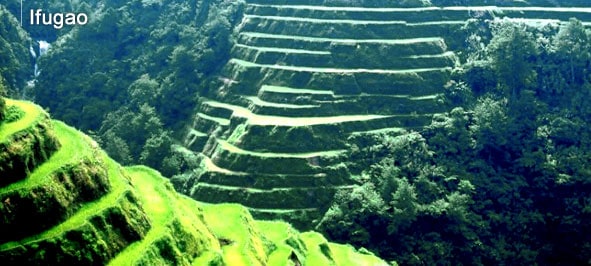
How to Get There
Ifugao: Travel Guide & Emergency Services
Ifugao, a mountainous province in the Philippines, is known for its breathtaking rice terraces carved into the hillsides. It’s a popular destination for hiking, exploring local culture, and experiencing the beauty of nature.
Getting There:
- From Manila: Auto Bus, Dangwa Tranco Bus, and KMS Bus offer direct trips to Ifugao.
- From Baguio City: Ohayami Bus, Dangwa Tranco Bus, and KMS Bus connect you to Ifugao.
Emergency Services:
- Hospitals: Ifugao Provincial Hospital, Lamut District Hospital, Hungduan District Hospital, Mayoyao District Hospital, Alfonso Lista District Hospital, Aguinaldo Emergency Hospital, Good News Clinic Banaue, Immaculate Conception Clinic Banaue.
- Police: Ifugao Provincial Headquarters, Lamut Police Station, Lagawe Police Station, Kiargan Police Station, Banaue Police Station, Hungduan Police Station, Aguinaldo Police Station, Alfonso Lista Police Station.
- Fire Stations: Located near or within police stations.
Tourist Information:
- Police Stations and Outposts are located in all towns.
- A travel agent can help you plan your trip and find accommodations.
Planning Your Trip:
- If you have any specific interests or questions about Ifugao, fill out the “Request for Information” form.
Additional Tips:
- The best time to visit Ifugao is during the dry season, from November to April.
- If you’re planning to hike, be sure to wear proper footwear and bring plenty of water.
- Respect local customs and traditions.
Ifugao: Embracing Rich Heritage and Timeless Traditions
Ifugao, a province in the Philippines, boasts a captivating tapestry of culture, traditions, and breathtaking landscapes. Named after the Ifugao people, this region is renowned for its unique identity and the globally acclaimed Ifugao Rice Terraces.
1. Introduction to Ifugao 🌄🌍
1.1 Origin and History
Nestled in the Cordillera Central mountain range, Ifugao has a rich history dating back centuries. The Ifugao people have maintained a distinctive way of life, deeply rooted in their ancestral heritage.
1.2 Cultural Significance
Ifugao’s cultural significance extends beyond its geographical boundaries. The traditions and practices of the Ifugao people have become emblematic of the Philippines’ diverse cultural landscape.
2. Ifugao Rice Terraces 🌾🏞️
2.1 UNESCO World Heritage Site
The Ifugao Rice Terraces, a UNESCO World Heritage Site since 1995, stand as a testament to ancient agricultural ingenuity. Carved into the mountainsides, these terraces are a marvel of engineering and a living testament to sustainable farming practices.
2.2 Construction and Engineering Marvel
Constructed over 2,000 years ago, the Ifugao Rice Terraces showcase the skillful engineering of the Ifugao people. The intricate irrigation system, passed down through generations, reflects their deep understanding of the land.
2.3 Importance in Agriculture
Beyond their aesthetic appeal, the terraces play a crucial role in agriculture, providing a sustainable way of cultivating rice. The Ifugao people’s deep connection with the land is evident in the meticulous care they invest in maintaining these terraces.
3. Ifugao Culture and Traditions 🎉👗
3.1 Clothing and Adornments
The Ifugao people’s traditional clothing and adornments are a vibrant reflection of their cultural identity. Intricately woven fabrics and unique accessories showcase the craftsmanship passed down through generations.
3.2 Festivals and Rituals
Ifugao’s calendar is dotted with colorful festivals and rituals that celebrate their agricultural cycles and ancestral spirits. These events are a testament to the community’s strong bond and shared cultural practices.
3.3 Social Structure and Community Life
Ifugao communities follow a distinct social structure with defined roles and responsibilities. Community life revolves around mutual support, reinforcing the strong ties that bind the Ifugao people together.
4. Ifugao Arts and Crafts ✂️🪵
4.1 Handicrafts and Weaving
Ifugao is renowned for its intricate handicrafts, particularly weaving. Skilled artisans create beautiful textiles, each telling a story through patterns and colors, preserving a tradition that has endured for centuries.
4.2 Woodcarving and Sculpture
Woodcarving is another art form that flourishes in Ifugao. From traditional sculptures to functional items, the craftsmanship reflects the deep connection between the Ifugao people and the materials sourced from their surroundings.
5. Ifugao Language 🗣️📚
5.1 Unique Linguistic Features
The Ifugao language holds unique linguistic features, showcasing the rich linguistic diversity in the Philippines. Efforts to preserve and promote the language are vital for maintaining the cultural identity of the Ifugao people.
5.2 Importance of Preserving the Language
As globalization and modernization continue, preserving the Ifugao language becomes crucial in safeguarding the cultural heritage of the region. Language is a conduit for passing down traditions and stories from one generation to the next.
6. Ifugao Heritage Sites 🏰🌳
6.1 Historical Landmarks
Ifugao is home to various historical landmarks that bear witness to its rich past. These sites, whether ancient burial grounds or remnants of traditional structures, contribute to the narrative of Ifugao’s cultural evolution.
6.2 Preservation Efforts
Preserving these heritage sites is a collective responsibility. Ongoing efforts, both locally and internationally, aim to conserve these sites, ensuring that future generations can connect with Ifugao’s historical roots.
7. Ifugao Today 🌏💼
7.1 Modern Challenges and Adaptations
While Ifugao takes pride in its traditions, the region also faces modern challenges. Balancing the preservation of cultural identity with the demands of contemporary life requires adaptability and forward-thinking.
7.2 Tourism and Economic Impact
The influx of tourists drawn to Ifugao’s cultural richness contributes to the region’s economy. However, sustainable tourism practices are essential to maintain the delicate balance between cultural preservation and economic growth.
8. Breathtaking Landscapes of Ifugao 🏞️🌲
8.1 Beyond the Terraces
While the Ifugao Rice Terraces are iconic, Ifugao’s landscapes extend far beyond. Verdant mountains, lush forests, and pristine rivers offer a haven for nature enthusiasts, inviting exploration beyond the terraced fields.
8.2 Ecotourism Opportunities
Embracing ecotourism initiatives, Ifugao opens up opportunities for responsible travel. Visitors can immerse themselves in the region’s natural beauty while actively participating in efforts to preserve the environment.
9. Ifugao Cuisine 🍲🌾
9.1 Traditional Dishes
Ifugao cuisine is a gastronomic delight, reflecting the region’s agricultural abundance. Traditional dishes, often prepared with locally sourced ingredients, offer a unique culinary experience.
9.2 Culinary Heritage
The culinary heritage of Ifugao is intertwined with the land, with recipes passed down through generations. Exploring Ifugao’s food culture is a flavorful journey into the heart of the region.
10. The Ifugao People and Identity 👥🏞️
10.1 Ethnic Identity
The Ifugao people take great pride in their ethnic identity. Preserving their distinctiveness in a rapidly changing world is a testament to their resilience and commitment to cultural heritage.
10.2 Cultural Pride
Cultural pride is a driving force for the Ifugao people. The sense of identity, rooted in traditions and customs, shapes the way they navigate the challenges of the modern era.
11. Ifugao and Sustainable Practices 🌱🌏
11.1 Environmental Consciousness
The Ifugao people, deeply connected to their natural surroundings, embody environmental consciousness. Sustainable practices are integrated into daily life, fostering harmony between the community and the environment.
11.2 Eco-friendly Initiatives
From traditional farming methods to community-led conservation projects, Ifugao actively engages in eco-friendly initiatives. These efforts align with global calls for sustainable practices, positioning Ifugao as a model for environmentally conscious living.
12. Challenges and Opportunities for Ifugao 🔄💡
12.1 Preserving Traditions in the Face of Modernization
As modernization accelerates, Ifugao faces the challenge of preserving its traditions. Finding a delicate balance that allows for cultural evolution while safeguarding heritage is a pressing concern.
12.2 Economic Prospects
Exploring economic opportunities that align with Ifugao’s cultural values is essential. Sustainable development initiatives can bolster the local economy without compromising the region’s unique identity.
13. Future Prospects for Ifugao 🚀🌐
13.1 Balancing Tradition and Progress
The future of Ifugao hinges on successfully balancing tradition and progress. Collaborations between local communities, government bodies, and international organizations play a pivotal role in shaping a sustainable and culturally rich future.
13.2 Global Recognition and Collaborations
Elevating Ifugao to global recognition requires collaborative efforts. Partnerships that celebrate and preserve Ifugao’s cultural heritage on an international stage contribute to the region’s continued prosperity.
14. Conclusion 🌟🤝
14.1 Recap of Ifugao’s Rich Heritage
Ifugao, with its ancient terraces, vibrant culture, and resilient people, stands as a beacon of cultural richness. Preserving this heritage is not just a local responsibility but a global one, recognizing the value of diversity in shaping our collective identity.
14.2 Call to Appreciate and Preserve Cultural Diversity
In a world that races towards modernization, Ifugao serves as a reminder of the importance of cultural diversity. It’s a call to appreciate, learn from, and actively preserve the unique traditions that enrich our global tapestry.
FAQs About Ifugao
Can I visit the Ifugao Rice Terraces?
Yes, the Ifugao Rice Terraces are open to visitors, offering a mesmerizing experience of ancient agricultural engineering.
What is the significance of Ifugao festivals?
Ifugao festivals hold cultural and spiritual importance, marking key agricultural cycles and paying homage to ancestral spirits.
How can I contribute to Ifugao’s preservation efforts?
Supporting responsible tourism, respecting local customs, and participating in community-led initiatives are ways to contribute.
What are some traditional Ifugao dishes to try?
Sample Ifugao’s culinary heritage with dishes like pinikpikan (chicken soup) and hinalo (rice cakes).
How can Ifugao maintain its cultural identity amidst modern challenges?
By finding a balance between embracing modernity and preserving traditions, Ifugao can navigate the challenges of cultural evolution.
You may also like
- https://bestphilippinestravelguide.com/filipino-food/
- https://bestphilippinestravelguide.com/food-festivals-in-the-philippines/
- https://bestphilippinestravelguide.com/temple-of-leah/
- https://bestphilippinestravelguide.com/cagayan-de-oro-tourist-spots/
- https://bestphilippinestravelguide.com/pagadian-tourist-spot/
Table of Contents
Giovanni Carlo P. Bagayas is a seasoned travel guide and passionate explorer from the Philippines. With years of experience uncovering the hidden gems of his homeland, Giovanni has dedicated his career to showcasing the beauty, culture, and adventure that the Philippines has to offer. As the author of Best Philippines Travel Guide, he combines his expertise and love for travel to provide insightful tips, detailed itineraries, and captivating stories for travelers seeking unforgettable experiences in the Philippines. Giovanni’s mission is to inspire wanderlust and help visitors discover the true essence of his vibrant country.

